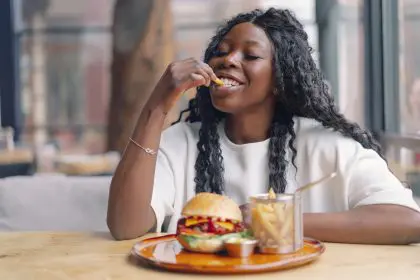Getting in tune with your body’s hunger signals can feel like trying to decode a mysterious language. But what if we told you there’s actually a super simple tool that can help you master this whole eating thing? Enter the hunger-fullness scale – your new BFF in the journey to mindful eating. Let’s dive into everything you need to know about this game-changing approach!
What’s the deal with this hunger scale anyway?
Think of the hunger-fullness scale as your body’s personal fuel gauge. It runs from 0 to 10, where 0 is basically “I’m so hungry I might pass out” and 10 is “help, I can’t move, I ate way too much.” The sweet spot? Right around 5, where you’re neither hungry nor stuffed – just perfectly content.
This isn’t just some random concept that someone pulled out of thin air. It’s actually been a total lifesaver for people trying to get their eating habits back on track, especially after years of yo-yo dieting. Because let’s be real – when you’ve spent forever following strict food rules, your body’s natural hunger signals can get seriously confused.
The tea on why you should care about this scale
Listen up, because this is where it gets good. Using the hunger-fullness scale is like having a superpower that helps you:
- Avoid those hangry moments that make you snap at your bestie
- Stop feeling like you need to unbutton your pants after every meal
- Actually enjoy your food instead of inhaling it
- Make friends with your body’s natural signals
- Kiss goodbye to those rigid eating schedules
Spill the signs: How to know you’re actually hungry
Your body has some pretty obvious ways of telling you it needs fuel. Here’s the rundown of hunger signs you might be feeling:
- Your stomach feels like it’s doing an interpretive dance
- You’re giving everyone major side-eye for no reason
- Focusing on anything feels like trying to solve a Rubik’s cube blindfolded
- You’re getting those weird dizzy spells
- Your head is starting to pound
- Food commercials suddenly look like actual masterpieces
- You’re feeling nauseous (plot twist: sometimes extreme hunger feels like not being hungry at all!)
The fullness flex: Knowing when to put down the fork
Just as important as knowing when to eat is recognizing when you’re good to stop. Here’s what to watch for:
- That satisfied feeling that hits different
- You start eating slower without even trying
- Your stomach feels comfortably tight (not in a “help me” way)
- The food doesn’t taste quite as amazing as it did at first
- You could stop eating and feel totally fine about it
Your step-by-step guide to becoming a hunger scale pro
Ready to level up your eating game? Here’s how to make this scale work for you:
- Start your hunger-tracking journey Take a week to really notice your eating patterns. When do you usually get hungry? What does it feel like? Think of yourself as a food detective gathering clues about your body’s signals.
- Check in before meals Before you dig in, ask yourself: “Where am I on the scale right now?” If you’re at a 4, maybe you just need a small snack. If you’re at a 2, it’s definitely time for a proper meal.
- Pause during eating This is where the magic happens. Take breaks while eating to check in with your body. Are you still enjoying the food? Do you feel satisfied? There’s no rush – your food isn’t going anywhere.
- Find your sweet spot Aim to stop eating when you hit about a 6 or 7 on the scale. This means you’re comfortably full but not stuffed. Think of it as leaving a little room for dessert (even if you don’t actually have dessert).
The truth about who should try this
The hunger-fullness scale is basically like the Swiss Army knife of eating tools – it’s super versatile and can help tons of people. Whether you’re:
- Trying to break free from the diet cycle
- Working on not overdoing it at meals
- Looking to build a better relationship with food
- Wanting to understand your body’s signals better
This scale could be your new secret weapon. However, if you’re dealing with a diagnosed eating disorder, this might not be the best tool for you right now. In that case, working with a healthcare provider on a structured eating plan is probably a better move.
The bottom line
Think of the hunger-fullness scale as your personal guide to becoming fluent in your body’s language. It’s not about being perfect or hitting exact numbers – it’s about getting to know yourself better and building a healthier relationship with food.
The best part? Once you get the hang of it, you might not even need the scale anymore. You’ll just naturally know when you’re hungry and when you’re satisfied. It’s like learning to ride a bike – at first, you need training wheels, but eventually, you just get it.
So go ahead and give it a try. Your body’s been trying to talk to you all along – maybe it’s time to start listening!
















